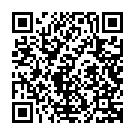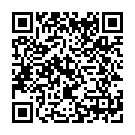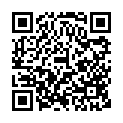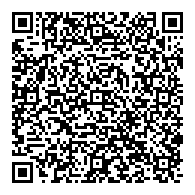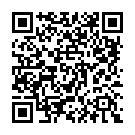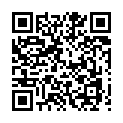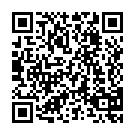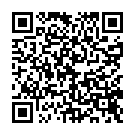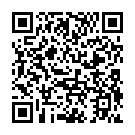Operating Systems
Microsoft:
- MS-DOS 6.22To get the most out of a PC in the 80s and early 90s, experience with DOS was essential. From loading games, to loading Windows, essential DOS commands were needed to perform these tasks. My experience with DOS allowed me to be comfortable using the current command prompt included on Windows systems today, as well as allowing me to get to grips with Unix-like systems such as Linux from the console and OS X’s terminal quite easily.
- Windows 3.XThis is my first memory of home computing. My parents, back in 1993, bought a Packard Bell Legend 660 PC. It was a 486 machine clocked at 33MHz and shipped with Windows 3.1, but when it became my own computer at the turn of the millennium, my Dad helped me install Windows for Workgroups 3.11 onto it. The key difference most people, raised on later Windows operating systems, notice is the lack of start menu, which has become an iconic part of Windows since 1995.
- Windows 95When it came out, my dad installed this on to the 486, I can remember him calling Microsoft support as our system struggled to install it. Eventually, though, I was able to try out the new system. I quite liked it, even though it was quite slow. Being a child of only 5 when it was released, it didn’t take long to get to grips with the new layout and multimedia capabilities Windows 95 had to offer. Being so young, I wasn’t allowed to go on the Internet, though, where weren’t many services online that a 5 year old would find interesting. Later on, my dad bought a Toshiba Satellite 200CDS Laptop. With a Pentium processor clocked at 100MHz and the memory expanded to 40Mb, this machine allowed me to experience Windows 95 at a decent speed.
- Windows 98In 1998, my parents decided the 486 was just getting too slow, old, and unable to keep up with new software that was on offer. So, they went out and bought a brand new Advent (MODEL NUMBER TO COME) PC from the UK retail store PC World. This sported a Pentium II Processor, clocked at 400MHz, and came with a whole host of upgrades, such as a DVD drive (and decoder card), a TV card, and, of course, Windows 98. This system was very similar to Windows 95, with the addition of Microsoft Internet Explorer being integrated into the whole system (an option available to 95 users during the installation of IE 4.0 – which my dad refused to use)
- Windows 2000My first real experience of Windows 2000 was in about 2002, when I needed an operating system for my first custom built PC. When I started high school, all the computers there ran Windows 2000. By the time I tried it, I had already been using Windows XP, so although it was a bit of a downgrade, it lacked many of the features which slowed down Windows XP.
- Windows MEOne of my friends convinced me that Windows ME was “so much better” than Windows 98, so I convinced my dad to go out and buy an upgrade licence for the Pentium II. It became clear that my friend’s review was a bit exaggerated, as access to DOS was removed, and many devices which worked fine with Windows 98, was now unable to function on this new system. Windows ME did introduce integrated zip folder capabilities, which was a bonus.
- Windows XP2001 rolled around, and my dad had already had enough of the system we had upgraded to less than a year ago. Our Pentium II was getting towards the end of its useful life. So we decided to get a new PC, a Sony Vaio PCV-RX1, with a Pentium 4 processor (1.6GHz). Windows XP was my first real experience with a version of Windows based on NT rather than DOS. A few of my older programs and games would no longer work on this system (DOS games in particular), but various emulation systems such as DOSBox allowed for backward compatibility. XP was a little bit of a learning curve due to the different back end, and my lack of experience with NT based systems, but it didn’t take long to get used to, and to this day, is still one of my favourite Windows Operating Systems.
- Windows VistaAh, Vista! Many months of speculation on what this new system would be able to do was discussed by me, and former OP-EZY manager James Crawford. We’d seen screenshots of Windows Code Name Longhorn, and attempted to acquire copies of the system whilst it was still being developed. Sadly, I didn’t get to experience the system until Beta 1. This had many bugs, including the whole system giving the, oh so familiar, Blue Screen of Death when I inserted a USB memory stick (for the purpose of exporting screenshots!). I followed the system through to public release, but I wasn’t even that happy with the final release (as were many others), it was still too buggy, and resource hungry. I stuck with it for a while, before heading back to Windows XP. Although, by 2007, I was already calling Linux (OpenSUSE) my primary Operating System.
- Windows 7Windows 7 was eagerly awaited by myself, again, I tried the betas before the final release, and found it to be a lot better than Windows Vista. The added bonus of being at college, then University, was that I was able to get free licences through the MicroSoft Developer Network Academic Alliance (MSDNAA) meaning I could upgrade for nothing! 7 ironed out the bugs I had issues with in Vista, and allowed me to move on from Windows XP on the remaning systems I have that still run Windows.
- Windows 8So, Windows 8 has arrived, and in some ways, it’s another love/hate relationship. The completely new Metro interface replaces the old Start menu which has been a part of most computer users’ lives since 1995! This, of course, meant I had to take some time to get used to the placement of features that were once, second nature to find. In my experience, once I figured out where everything was, it’s a really good system. The downside being, it’s far too integrated with the Internet, and to make the most of the new interface, a touchscreen is needed. I followed this system through Beta (and some pre-beta builds, one of which, I reviewed on this site), and was lucky enough to still be able to get a free licence through my university.
Apple:
- System 7I was given an old Macintosh by my next door neighbour. It was running System 7. I never had much of a chance to play with it as it was quite outdated. But it was a start to seeing how things worked in the Apple world (one mouse button, strange symbols on keys, etc.)
- OS 9
- OS X 10.4 – 10.10
- iOS 3.1.3 – 8.1.X
Linux:
- Slackware 8.1, 10.2
- Red Hat 8.0, 9
- Fedora Core 3, 4, 17
- OpenSUSE 10 – 11
- Ubuntu (and variants) 7.10 – 14.04
- CentOS 6.3-6.5, 7.0
Cisco:
- IOS
Cloud:
- Microsoft Windows Azure



